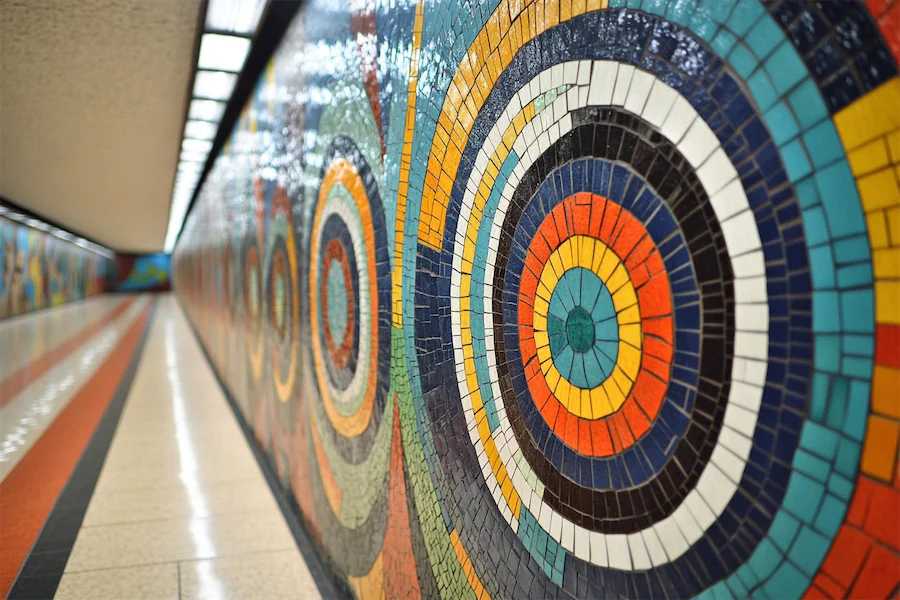Mosaic walls are artistic surfaces adorned with intricate designs composed of small pieces, known as tesserae, made from materials such as stone, glass, tile, or shell. This art form has been utilized throughout history to embellish floors, walls, and ceilings, reflecting the cultural and aesthetic values of various civilizations.
Introduction to Mosaic Walls
Mosaic art involves arranging tesserae into patterns or images, adhered to a prepared surface with an adhesive. The versatility in color, material, and design allows for a wide range of artistic expressions, making mosaics a popular choice for both decorative and functional applications in architecture and interior design.
History and Origins of Mosaic Walls
The origins of mosaic art trace back to ancient Mesopotamia in the third millennium BCE, where it was used to decorate temples and other significant structures. The Greeks advanced the technique by creating intricate floor mosaics with detailed geometric patterns and scenes from mythology. The Romans further popularized mosaics, incorporating them extensively in public buildings and private homes, often depicting daily life, nature, and religious themes. During the Byzantine era, mosaics became prominent in churches, featuring religious iconography with rich colors and gold leaf.
Key Features of Mosaic Walls
- Durability: Mosaic walls are long-lasting, with many ancient examples still intact, demonstrating their resilience over time.
- Aesthetic Versatility: The use of various materials and colors allows for endless design possibilities, from simple patterns to complex images.
- Reflective Qualities: Glass and mirrored tesserae can create dynamic visual effects by reflecting light, adding depth and vibrancy to spaces.
- Customization: Mosaics can be tailored to fit specific themes, styles, or cultural motifs, making them a versatile choice for personalized designs.
Applications of Mosaic Walls
- Interior Decoration: Mosaic walls serve as striking feature walls in living rooms, bathrooms, and kitchens, adding texture and color to interior spaces.
- Exterior Facades: Buildings utilize mosaic art to enhance exterior walls, creating visually appealing facades that stand out.
- Public Art Installations: Mosaics are often employed in public spaces, such as parks and subways, to create engaging and culturally significant artworks.
- Religious and Historical Sites: Many temples, churches, and historical buildings feature mosaic walls depicting religious or historical narratives.
Considerations When Choosing Mosaic Walls
- Material Selection: The choice of materials affects the durability, maintenance, and overall appearance of the mosaic. For instance, glass tesserae offer vibrant colors and reflectivity, while stone provides a more subdued, natural look.
- Installation Expertise: Creating a mosaic requires skilled artisans to ensure precision and quality, especially for intricate designs.
- Maintenance: While mosaics are generally durable, the grout and materials used may require periodic cleaning and sealing to maintain their appearance and longevity.
Conclusion
Mosaic walls are a timeless art form that combines functionality with aesthetic appeal. Their rich history and adaptability make them suitable for various applications, from enhancing modern interiors to preserving cultural heritage in historical restorations. By carefully selecting materials and designs, mosaic walls can transform spaces, adding unique character and artistic value.
